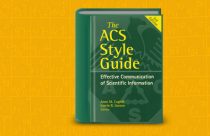Unique Intricacies of the MLA Style Guide

In general, there are a certain set of standards that are put in place when writing and constructing documents. This set of standards is referred to as a style guide and is used for general use or for a particular publication, organization, or field. For students and academics in most disciplines, such as medicine, science, journalism, law, government, business, humanities etc., each field often uses its own style guide.
The purpose of the style guide is to improve communication by instituting and implementing a style that is followed by all. Scholarly articles prepared with a style guide are consistent, and it is easy to understand what is to be within the document and across multiple documents when they are all prepared in the same manner. The style guide enforces certain rules that direct writers to follow the best practices set by their field of study, which in academic writing is very important.
MLA Style Guide
The MLA (Modern Language Association) style is most commonly used to write papers and cite sources in academic research associated with the liberal arts and humanities. The style guide was established more than 50 years ago and has since been widely implemented by scholars, academic journals, and the commercial press.
Over the years, the MLA style has been updated to reflect changes in the world of writing. For example, currently, articles are published in a huge range of formats. With the advent of online journals, academic writing seems to be constantly changing. To keep up with these changes, the MLA style was updated in 2016. This new update represents the eighth edition of the MLA Handbook, which is accompanied by a resource called the MLA style center. Academic researchers and students can use these resources to learn about the MLA style and get guidance on how to use it properly when writing.
Unique Aspects of the MLA Style
There are a couple of other style guides that are also commonly used in academia and these include the APA (American Psychological Association) style, which is most commonly used to cite sources within the social sciences, and the Chicago Manual of Style, which is used in some social science publications and most historical journals. There are some general distinctions between each of these and the MLA style. Here we present a few:
- In the MLA style, the date follows the author in the citation and is not in parentheses. In the APA style, the date follows the author and is in parentheses.
- In the MLA style, the author’s full name (first and last) is spelled out. In the APA style, the author’s last name is spelled out and the first name is only listed as initials.
- In the MLA style, all major words in the title are capitalized and the title is underlined while in the APA style, only the first word of the title, the first word of a subtitle and any proper nouns are capitalized. Everything else is in lowercase, and the title is italicized.
- In the MLA style, the source page is called “Works Cited”. In the APA style, the source page is called “References”. In the Chicago style, the source page is called “Bibliography.”
- In the MLA style, the in-text citations use the last name of the author and the page number. In the APA style, the last name of the author and the date are used.
- In addition, for the in-text citations, the MLA style does not use commas to separate the material, before the page numbers. The APA style does use commas and, if a page is mentioned, it uses p. and pp.
- Most of the differences between the MLA style and the Chicago style are too numerous to list, but the main difference is in the in-text citations. The Chicago style allows for footnotes and endnotes to cite sources, while the MLA style does not.
MLA Style Tips
Writing with a style guide takes time getting used to when you begin, but as you become familiar with the style and intricacies of the guide it is quite straightforward. Here are a few tips for getting started with the MLA style guide.
- For the general formatting, set your default font as Times New Roman, 12 point, set the margins of your paper to one inch on each side, use only one space after periods, indent the first lines of each of your paragraphs one half-inch from the edge of the left margin and double space the entire document.
- The titles should be in italics and you do not need a title page.
- Page numbers should be in the upper right corner.
- The MLA style calls the bibliography a “works cited” page.
- Depending on the number and type of sources that you have used (whether it is a book, article, or an Internet-based source), you have to pay special attention to the author’s name, the title of the book/article, the publication date, the publisher and the place of publication.
- After you are finished with writing the article make sure to review all of the style issues to ensure that you do not miss anything.









